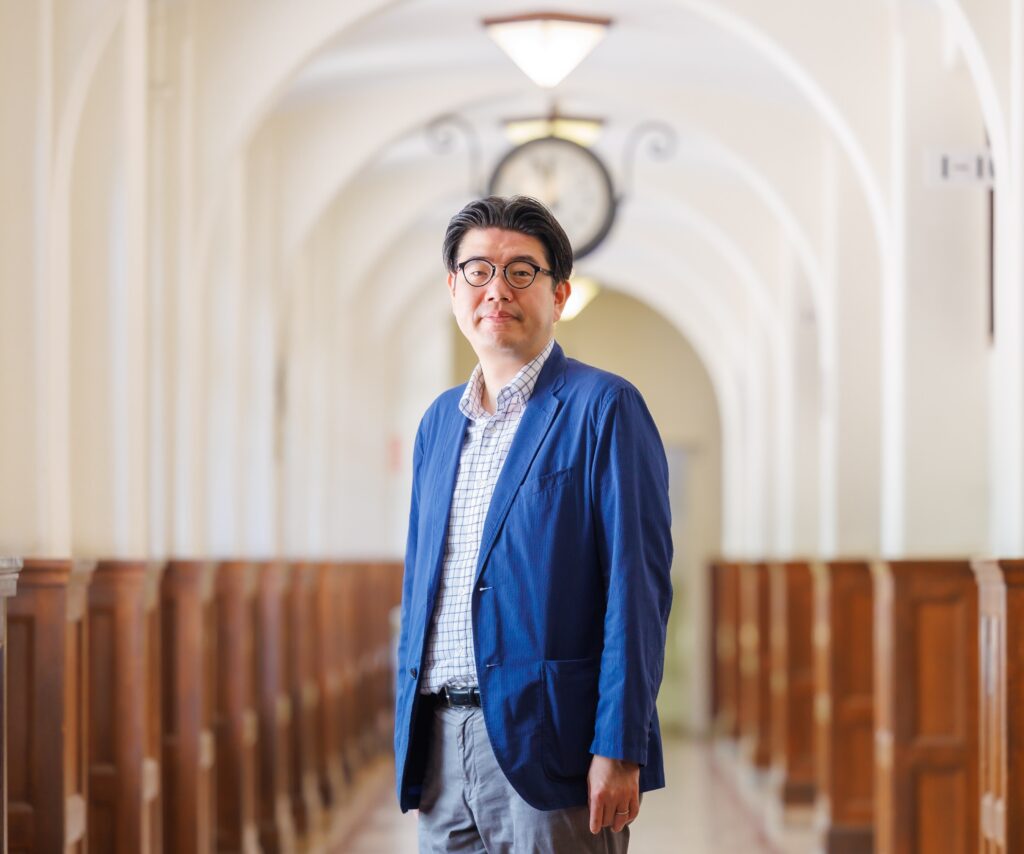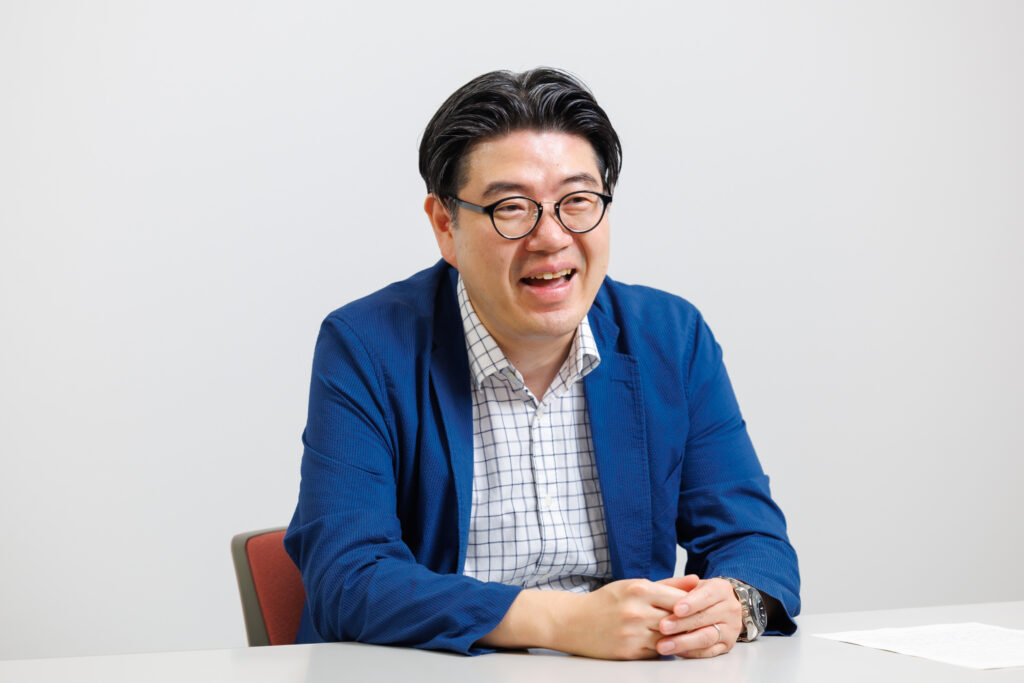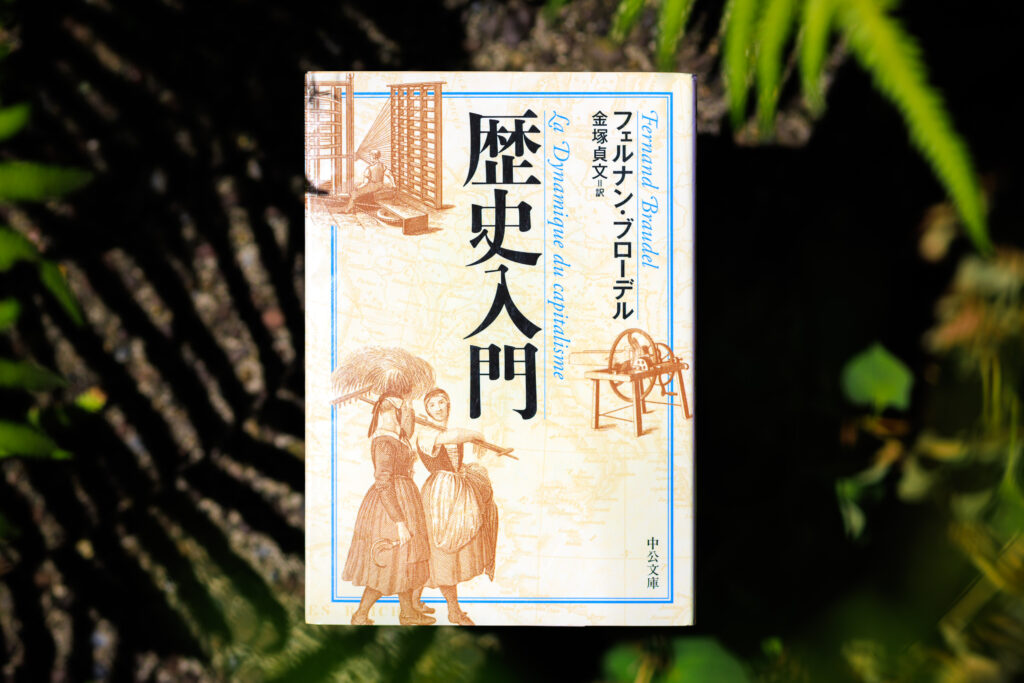
Professor Masanori Sakano from the Faculty of Humanities specializes in the religious history and sociocultural history of early modern France. He talks about Notre-Dame de Paris—a cathedral in Paris which was damaged in a fire in 2019—and the charms of cities and regions from the perspective of history.
I specialize in the relationship between religion and society in 16th to 18th century France. In my research, I focus on the backgrounds of people and the building of trust. In early modern France, besides the Catholic majority, Protestants made up about 10% of the population, and the 16th century also experienced religious wars. In the 17th century, Catholic elites known as the Dévots took over the leadership of society, and their central figure was a woman called Madame Acarie.
Female Dévotes like Madame Acarie build interpersonal relationships not only with the clergy but also with nobility and bureaucrats close to the king. At the same time, they formalized welfare activities for vulnerable groups in society—such as poor commoners and sick people—and played key roles in economic support for missionary work.
Beginning in the 17th century, France started establishing overseas bases in North America and Asia, where the organization known as the Society of Foreign Missions of Paris played an important role, including the dispatch of missionaries. Established in the mid-17th century, in an age when information communication was still underdeveloped, how did this organization share values and activity policies on a global scale? Interpersonal relationships and trust are important for answering such questions.
Analyzing the records by missionaries and their correspondence with France, you can understand who is linked to who and the thoughts that they shared. There are also unexpected discoveries, such as finding links between people who were thought to have different ways of thinking because they belonged to different organizations. Society can be seen in a more three-dimensional way by focusing on people and their connections.
Studying Notre-Dame Cathedral using a cross-disciplinary approach

My recent research theme is the relationship between space and culture in cities. In 2019, Notre-Dame Cathedral in Paris was damaged in a fire. With a history of 850 years, this cathedral is a cultural asset symbolizing France, and it also remains in active service as a religious facility.
While there is a lot of research in Japan about the cathedral in terms of construction, its significance to people is not well understood. Therefore, I conduct research using a cross-disciplinary approach that looks not only at the spatial aspect, but also politics, cultures, and religions.
An example is the use of space within the cathedral. What are the rituals conducted at each location, and how have they changed amid its long history? And with the cathedral being reconstructed, should its appearance as a historical cultural asset before being damaged by fire be reproduced, or should it take on a form matching modern worship as a Catholic religious space? I cannot predict the future of Notre-Dame, but I think we can embark on new discussions by unraveling its history and significance.
History as an academic field starts by having a critical mind
Going forward, I hope to further develop history research into space and culture, by using France and Europe as starting points and making comparisons with examples in Japan and Asia. For example, Japan has long faced the issue of regional revitalization, and it may be possible to discover the potential of Japan’s regions using the concept of “terroir” derived from the historical geography of France.
Terroir was originally a term used in wine production and referred to the soil unique to a region and distinctive characteristics born through history. Can we use this concept outside the realm of wine?
Unique products are born from the mountains, valleys, and rivers of a place, through which relationships with various cities are created and culture is established. By digging into the history of a place from its climate and searching for the historical background that led to the valuation and branding of local specialties, we should be able to further increase a region’s charms.
In this way, studies of history looking at things from long time spans have the ability to create solutions for various modern issues. The difference between history as an academic field and history as a hobby is whether one has a critical mind. To those of you who will be studying history in the future, instead of memorizing the names of eras, I hope you will take a greater interest in modern society and the things around you.
The book I recommend
“La Dynamique du Capitalisme”(The Dynamics of Capitalism)
by Fernand Braudel, Japanese translation by Sadafumi Kanezuka, Chuko Bunko

A book filled with the essence of a historian who influenced me the most, it is very interesting as it connects the cultures and lives of people with the economy, adopting a perspective that spans an extremely long period of time over a vast region. Reading this book allows you to form an image of world history different from what you learned up to high school.
-
Masanori Sakano
- Professor
Department of History
Faculty of Humanities
- Professor
-
Graduated from the Division of History, Faculty of Letters, University of Tokyo, and received his Ph.D. in Literature after completing the doctoral program at the Division of European and American Studies of the university’s Graduate School of Humanities and Sociology. Took on several positions—such as lecturer and associate professor at the Department of European Studies, Faculty of Humanities, Musashi University as well as associate professor at the Department of History, Faculty of Humanities, Sophia University—before assuming his current position in 2020.
- Department of History
Interviewed: July 2023